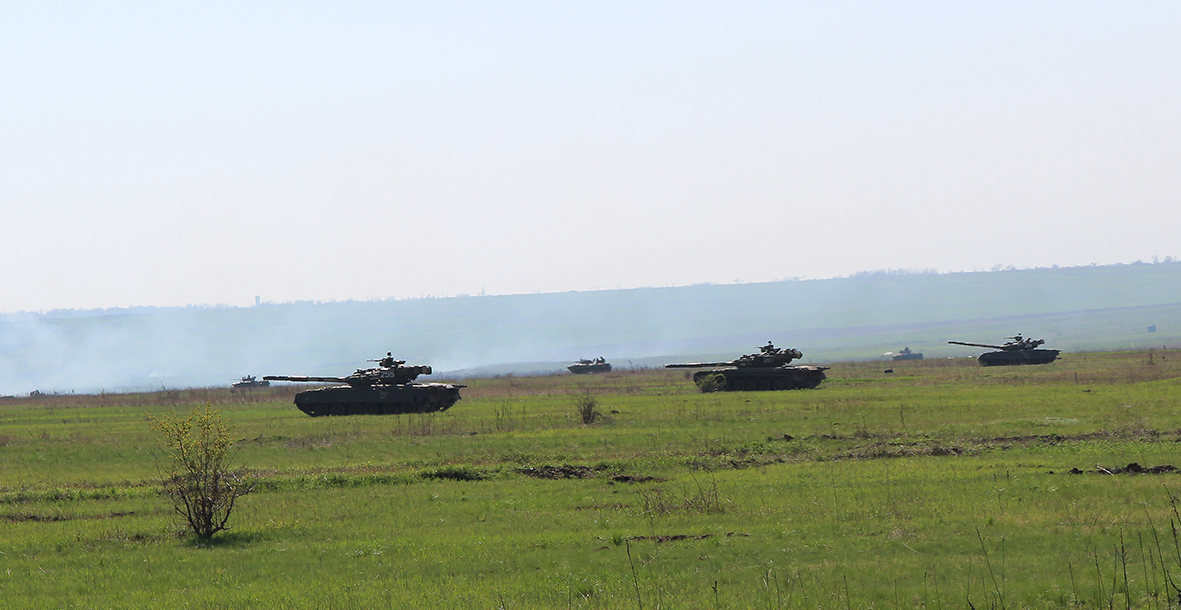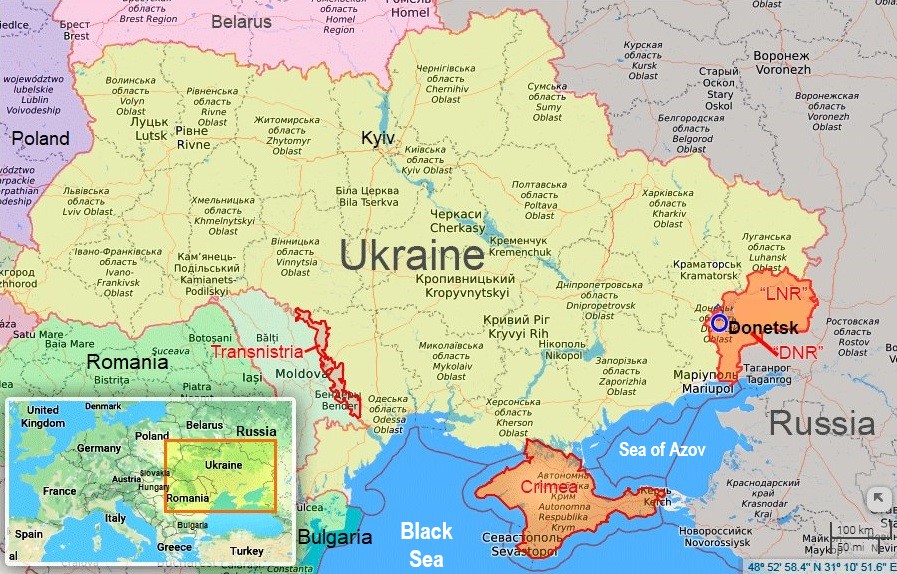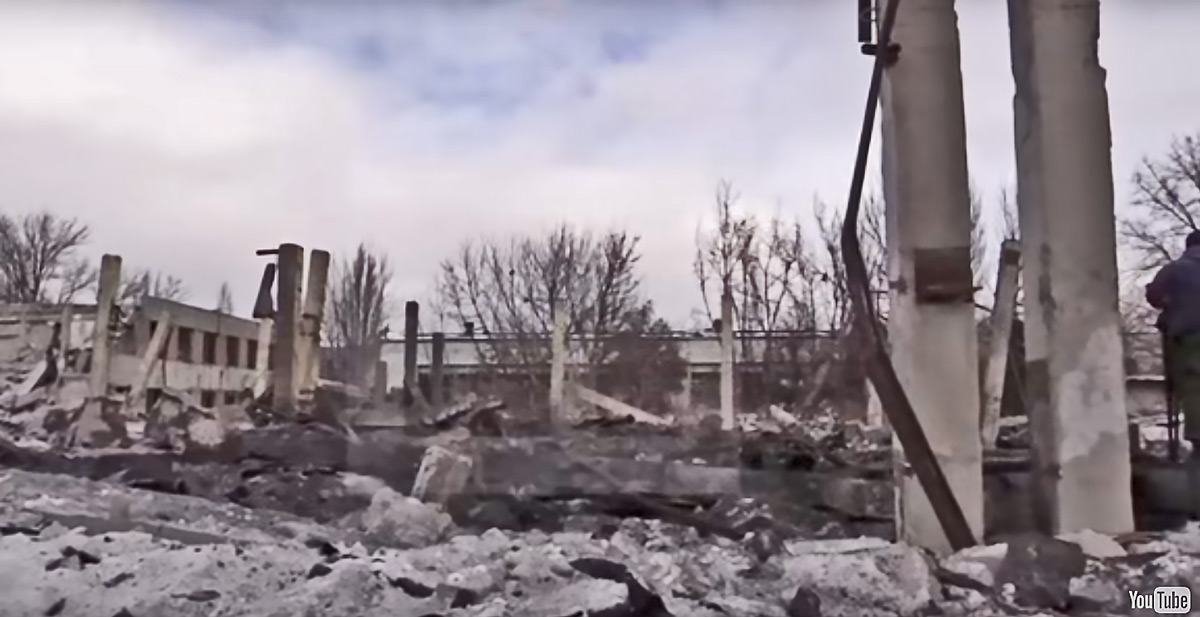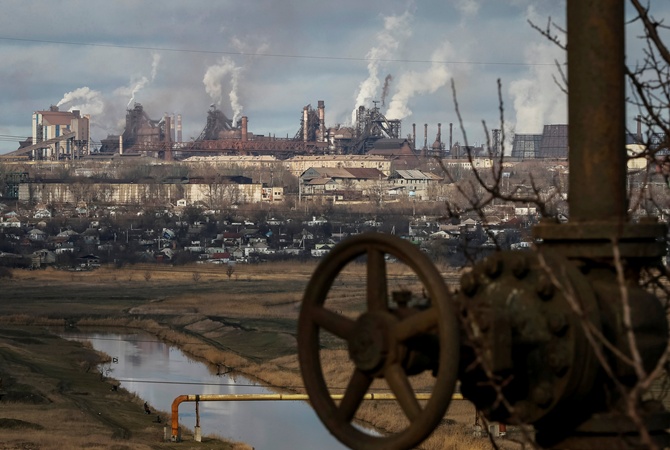In the four years, the Russian war against Ukraine on land has claimed more than 10,000 lives, and it’s far from ending. But now there are fears that the land war may shift to the sea.
Following the annexation of Crimea, Ukraine initiated Crimea-related arbitration proceedings at the International Tribunal for the Law of the Sea (ITLOS) in Hamburg in 2016. And earlier this year, Ukraine submitted a memo to ITLOS. According to the claim, Russia had excluded Ukraine from exercising its maritime rights. Russia has been illegally exploiting Ukraine’s offshore gas fields and fishery resources, and it usurped Ukraine’s right to regulate its own maritime areas, including blocking traffic to Ukrainian seaports with the Kerch Strait Bridge construction.
“Crimean Bridge”
The Kerch Strait Bridge, illegally constructed in Ukrainian domestic waters by Russia to connect the Russian territory with occupied Crimea, has effectively limited navigation to the Ukrainian ports of Mariupol and Berdiansk at the coast of the Sea of Azov. Since the bridge’s arch is 35 meters above the sea, the overall height of a vessel cannot exceed 33 meters. Thus, Panamax type ships, previously calling Mariupol Port, cannot pass through the strait, because their overall clearance is 37.5 meters.
In May on the day Russian President Putin opened the “Crimean Bridge” as they call it in Russia, Ukrainian President Petro Poroshenko said, “The invaders will definitely need the bridge when they will urgently leave our Crimea.” But until now, Putin showed no signs that he is going to leave the occupied peninsula and the Ukrainian maritime zone.
According to Ukrainian Infrastructure Minister Volodymyr Omelyan‘s assessment, Ukrainian Azov ports lose 30% of maritime cargo traffic due to the low clearance of the Kerch Strait Bridge.
As Ihor Kabanenko, retired admiral of the Ukrainian Navy, predicted last fall when the Kerch Strait Bridge was under construction,
All of these Russian activities [to land-lock the Mariupol and Berdiansk ports] should be considered in connection with Moscow’s attempts to establish a so-called “land corridor to Crimea.” Within this context, the intermittent closures of the Kerch Strait look like one more example of Russian-style “hybrid” warfare—whereby socio-physiological destabilization precedes an overt military blitzkrieg… Moscow’s actions regarding the Kerch Strait are likely to include further “access limitation” (“Restrictions scenario”) with different freedom-of-navigation restrictions as well as an “access denial” (“Blockade scenario”) policy, which would involve a unilateral Russian decision to call this strait “Russian internal waters.”
Military tensions
Back in 2014, the Russian plan was to capture the entire south and east of Ukraine. The land corridor to Crimea would make supplying the annexed peninsula much easier for Russia. But after a small seaside border town of Novoazovsk fell to Russian regular forces in August of 2014, the first big city on the way from Russia to Crimea, Mariupol, withstood the months-long battle back then. The front line had stabilized, troops entrenched and the positional fighting has been going on in the fashion of the First World War with short escalations involving artillery fire and subversive activity.
The construction of the oversea bridge from Russian Taman to Crimea was Putin’s Plan B. The bridge has connected Crimea to the Russian part of Caucasus and allowed Russia to tighten control of the Azov Sea. The Plan B seems succeded, but the land corridor plans don’t seem to be off the table.
Russia has been stepping up its naval military presence in the area, conducting naval drills in the Sea of Azov and re-deploying more of its ships. Russia explains its growing presence by the need to defend occupied Crimea and the newly erected bridge from Ukraine.
Meanwhile, there are no Ukrainian Naval Forces ships constantly present in the Azov Sea, where Ukraine borders Russia, explained Boris Babin, the permanent representative of the president of Ukraine on Crimea issues. Only the marine squads of the Ukrainian Border Guard Service patrol Ukraine’s territorial waters, but they can do nothing to stop Russia’s expansion in case it occurs.
In May, Vasyl Bohdan, a retired Ukrainian lieutenant general, said that the placement of the Russian Navy on the Sea of Azov gives Moscow the capability to attack Ukraine from the sea and potentially open a land bridge between Russia and Russian-occupied Crimea.
Hybrid blockade of the Azov boosts
Since the end of May, Russian naval patrols have been halting international cargo vessels heading to the Ukrainian northern coast of the Azov Sea and back towards the Black Sea.
Lately, Russians have drastically increased the number of inspections of vessels.
Admiral Kabanenko sees two objectives are in the Russian “hybrid” activity in the Azov. Firstly, Russia is blatantly violating international and Ukrainian maritime law to threaten Ukraine’s territorial integrity. And secondly, it tries to destabilize Ukrainian coastal territories via military and informational provocations.
However, one of the clear Russian objectives is to undermine the economy of Berdiansk and Mariupol. Shippers, delayed by the inspection, are losing between $5,000-15,000 per hour as a result of the Russian checks. The Russian strategy is to make imports and exports from both ports economically unprofitable.
At the opening ceremony of the international naval drills, Sea Breeze 2018 in Odesa on 9 June, Ukrainian Navy chief Ihor Voronchenko called the Russian actions in the Black and Azov seas, “Further ‘creeping’ annexation of our exclusive maritime economic zone.”
As of 16 July, Russia detained 148 vessels for inspection or arrest, which crossed the Kerch Strait heading to or from the Ukrainian Azov ports of Berdiansk and Mariupol, says Deputy Minister of Infrastructure Yurii Lavreniuk.
“Every day AMPU [Ukrainian Maritime Administration] records the instances of detainment by the Russian special services of the vessels, heading from/to the ports of Mariupol and Berdiansk. The Ministry of Infrastructure is submitting all data to the MFA. We receive multiple complaints from the captains of the ships, and agents who are working in Mariupol and Berdiansk ports, from port administrations, and members of parliament. This can’t hold. We have to establish a unified position of Ukraine’s further actions in response to the illegal actions of the Russian Federation,” stressed the deputy minister.
It remains unclear whether the Russian intention is to conduct a military operation including a naval offensive any time soon to take control of the Ukrainian mainland Azov coast and littoral. Ukrainian President Petro Poroshenko doesn’t exclude such a possibility. On 16 July visiting the Sea Breese maneuvers, he commented on the Russian illegal detainment of Ukrainian and foreign ships heading to Ukrainian Azov ports:
“We see this being done to block the Ukrainian ports in the Sea of Azov, to escalate tension, and possibly to conduct a military operation, attack Mariupol that exports ferrous metals, as well as attack other ports of the Sea of Azov,” he said.
Ukraine is not going to tolerate the illegal capture of its and foreign ships, Poroshenko stated a day after:
“We will not tolerate the illegal capture of Ukrainian and foreign ships moving toward Ukrainian ports, including Mariupol, aimed to stop the mining and smelting complex operating in [Ukrainian-controlled part of] the Donbas,” the President told a talk show on Ukraine’s ICTV channel.
The President said he had ordered the Minister of Defense, Chief of the General Staff, Commander of the Naval Forces to “take sufficient measures to stop the violation of the law and Russian provocations during the passage of ships through the Ukrainian Kerch Strait.”
However, it remains unclear what exact measures Ukraine can take having no control of the strait and having no naval ships in the area to unblock the Kerch Strait or at least provide the safe passage for the commercial vessels.
Read also:
- Moscow boosting tensions in Sea of Azov but can’t change strategic situation there, senior Ukrainian intelligence officer says
- Russia’s transformation of ethnic mix in occupied Crimea an act of genocide
- Russia positioning to attack Ukraine from Sea of Azov, Ukrainian general says
- Moscow blocking maritime shipping to Ukrainian ports on Sea of Azov
- Kyiv will resist any Russian naval attack on Azov littoral despite imbalance of forces
- How Putin’s Crimean bridge grew over 2016-2017 – satellite images
- Kerch bridge emblematic of new Russian imperialism, Kazarin says
- Chronology of the annexation of Crimea
- Ukraine reveals proof that Russian officers directed rocket attack on Mariupol in 2015
- The 75 Russian military units at war in Ukraine
- Hot war still on in Ukraine’s Donbas, and it’s far from frozen conflict
- Hague court rules Russia must compensate Ukrainian investors $159 mn for Crimea losses








